Logistics
Hiking trails vary from easy to access and popular (aka crowded...) to obscure and remote. Trails are generally well maintained and signposted, so navigation is not difficult. A major exception is if you're travelling over snowfields, such as to Camp Muir, over Panhandle Gap or Spray Park before they melt out, or hiking early/late in the season. Do not hike over snow unless you understand the dangers of snow bridges, and are prepared to navigate through a white-out or to hunker down and wait if the weather turns on you! It's a true saying that the mountain makes its own weather, and people have died from underestimating what this means at high altitude.
Another potential risk, mostly affecting backpackers, can be the more remote river crossings. Bridges are prone to washing away, and glacial meltwater can be challenging to ford if you want to cross before the Park Service gets around to replacing them.
Rainier is at its best between late July and September. There can also be great hiking in the rump seasons of May, June, October, and November, but these months require more research, attention to weather forecasts, and awareness of snow levels. The road up to Paradise is kept plowed during the winter, so high altitude snow sports remain accessible all year.
Backpacking
The epic Wonderland Trail (over 90 miles circumnavigating the mountain) is the jewel in Rainier's backpacking crown, but there are also many options for shorter loops or section hikes. Backpacking on Rainier can feel remote (few other people, a long way from road access) but also strangely tame as there are designated campsites with maintained pit toilets and bear poles for hanging your food.
Permits are required to camp on Rainier, because designated campsites means there are only a fixed number of spaces to go around. The normal system is that 2/3 of available capacity is allocated through a lottery during March, while 1/3 is held in reserve for walkup permits. Walkups are issued on an as-available basis to anyone who arrives in person at a ranger station for a trip starting that day or the day after. Some years are different, though. In 2016, all permits were walkup due to a software problem. In 2020, all permits were issued in advance due to the COVID pandemic.
This site includes a Wonderland Itinerary Planner which shows distance and elevation change between your choice of trailheads and campsites, and information about how to get a Wonderland permit.
Access
There are three main ways into the park: the Nisqually entrance (which leads to Longmire and Paradise) at the southwest, a northeast entrance leading to White River and Sunrise, and the southeast Stevens Canyon / Ohanapecosh entrance.
Before 2025, there used to be a fourth access to the less developed Carbon River and Mowich Lake on the northwest side of the mountain, but this is currently inaccessible due to the closure of Fairfax Bridge.
A fee is required to enter the National Park. If you plan on visiting more than once, it's much cheaper to buy an annual pass. Or if you only plan on visiting once, WHAT IS WRONG WITH YOU??? :-)
Starting in 2024, in an attempt to manage overcrowding, advance reservations are required to access the most popular areas during the busy summer months. In 2025, this only applies to the White River / Sunrise entrance. Plan your trip ahead of time to secure a timed entry slot, or arrive before 7 AM to skip the crowds and boost your chances of seeing wildlife. Some of my most treasured memories are from hikes where I arrived at Sunrise as early as 4 AM, then watched the sun come up around me while already on the trail.
If you are visiting from out of state, you'll probably want to rent a car. Mount Rainier is not accessible by public transport, and although you could take a taxi or private shuttle service, these are expensive not to mention tricky to coordinate the return journey as there is not much cell service inside the park.
Dogs other than service animals are not allowed on trails inside the National Park.
Lodging
Outside but near to the park, look for places to stay around Ashford, Enumclaw, Packwood, or between Greenwater and the Crystal Mountain ski resort.
Inside the park, car camping is available at Cougar Rock and Ohanapecosh (by reservation) and White River (first-come-first-served).
There are two historic lodges: the National Park Inn at Longmire, which is open year round, and the Paradise Inn at (duh) Paradise, which typically opens mid May to early October. Both make lovely bases from which to explore their surrounding areas. Rooms are small by modern standards, without AC, and many lack private bathrooms, but they do the job. A stay here is about location, ambiance, and history rather than modern hotel luxury. The Paradise Inn is busier and more architecturally impressive, while the National Park Inn boasts a mellow porch where Wonderlanders often stop by to enjoy a snack. The restaurant food is expensive and limited in variety, so if you are staying more than one night I'd recommend augmenting it by bringing a cooler with supplies of your own.
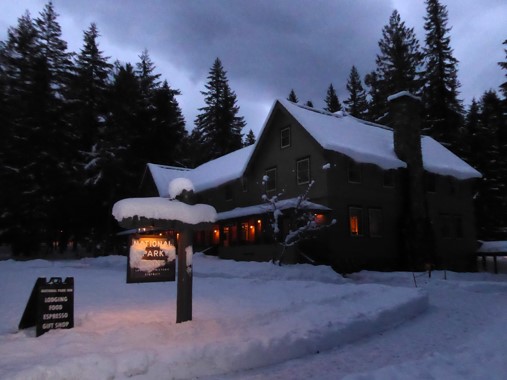
National Park Inn, Longmire |
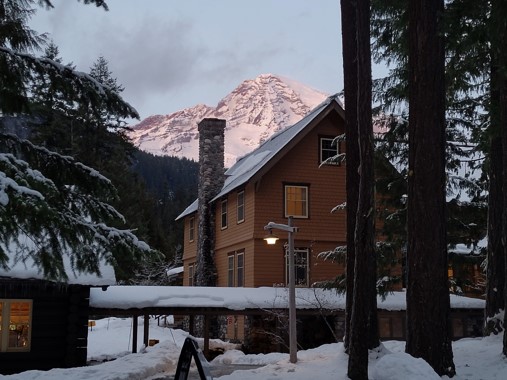
Evening light catching the summit behind the National Park Inn |
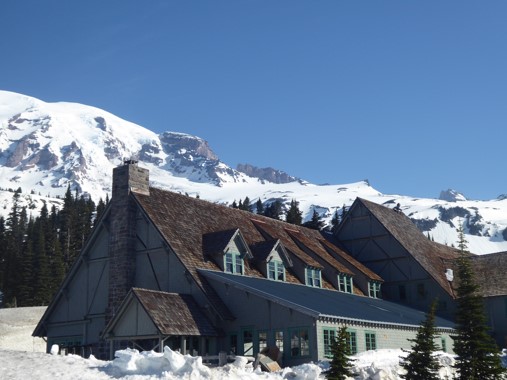
Paradise Inn |
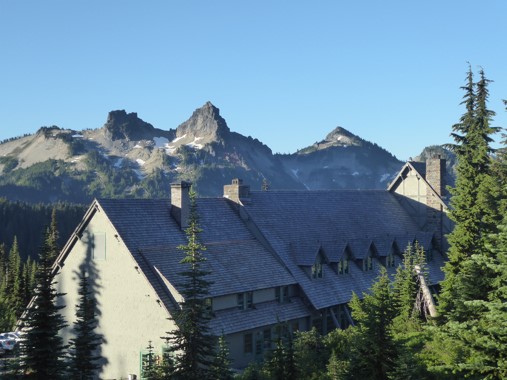
Tatoosh Range behind the Paradise Inn |
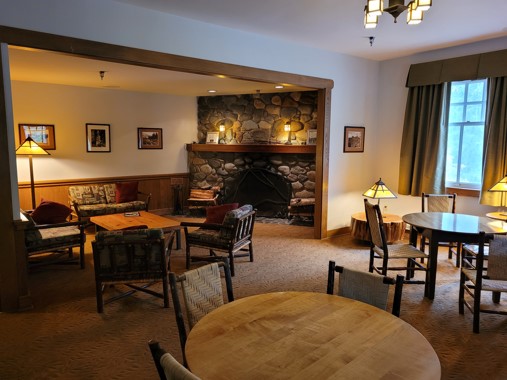
Inside the National Park Inn |
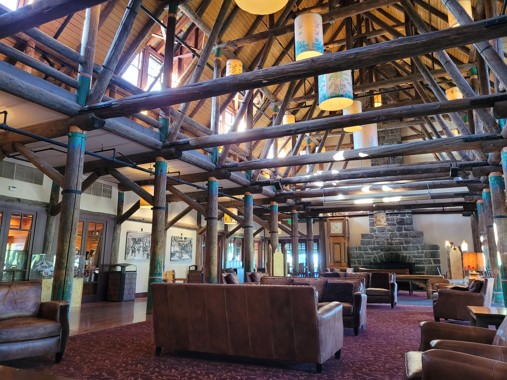
Inside the Paradise Inn |